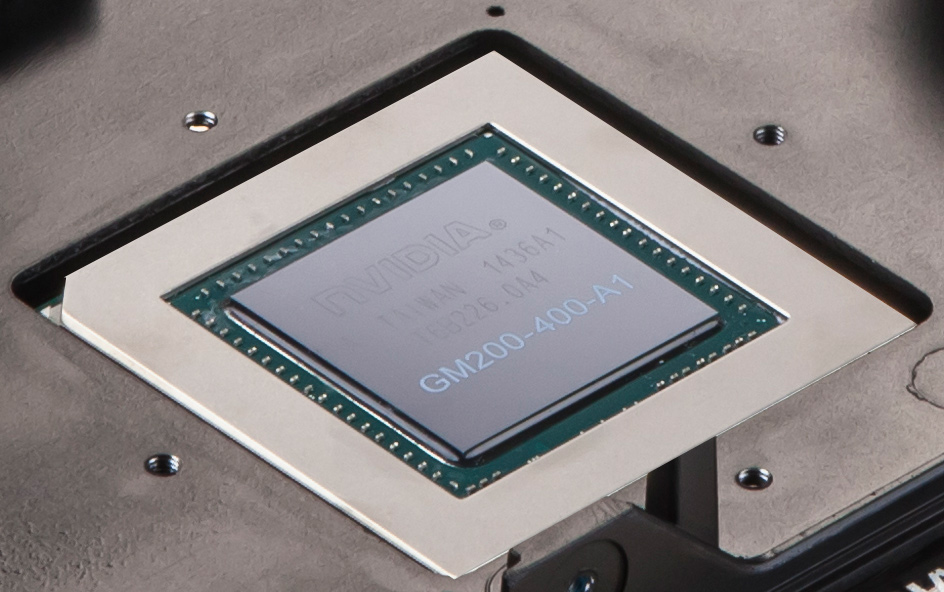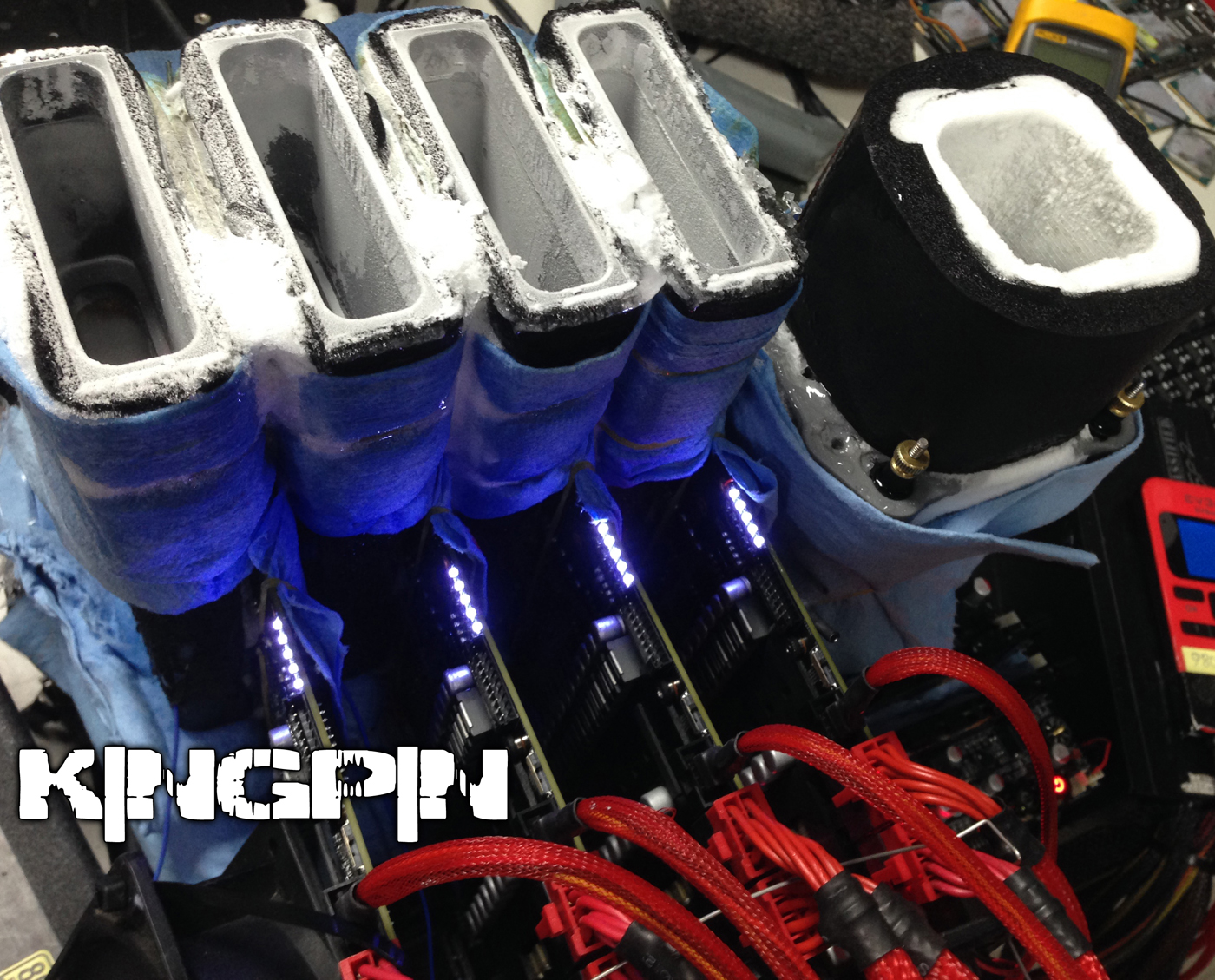Nvidia Corp.’s latest graphics processing units based on “Maxwell” architecture are rather good overclockers, but only to a certain degree. According to Vince “K|NGP|N” Lucido, a professional overclocker, without extreme methods of cooling (such as use of liquid nitrogen, chiller or other), most “Maxwell” GPUs just do not work at frequencies beyond certain limits even with ultra-high voltages, which is why in many cases it is useless to just amplify GPU voltage supply.
In a bid to overclock a microprocessor or a graphics processing unit, one needs to cool it down properly and increase voltage because operation at higher clock-rates requires additional power. Since higher power consumption means higher heat dissipation, requirements of better cooling increase with every additional 0.1V. Some previous-gen Nvidia GPUs could handle extreme temperatures and therefore could be overclocked to record frequencies even with air or water coolers. However, everything is different with “Maxwell”. The new graphics processing units from Nvidia require both additional voltage and exotic cooling methods to be overclocked to extreme frequencies.

What it means for end-users and makers of graphics adapters with fine coolers is that they will be unable to overclock “Maxwell” GPUs beyond certain points no matter what voltage they apply.
“With GeForce GTX 980 [GM204] and later GPUs, including GeForce GTX Titan X [GM200], the scaling on air/water has all but almost gone,” said Mr. Lucido in a forum post. “I would say about 95 per cent of all [Maxwell-based graphics cards] no matter [from] what [graphics card] brand, do not scale with more voltage than 1.25v-1.275v at temps warmer than 25°C or so. There is no magical BIOS that can effectively remove this.”
It is unknown why “Maxwell” architecture does not scale with extra voltage alone, but it is clear that with stock or hybrid coolers and additional voltage it will be impossible to hit clock-rates of over 1500MHz. If a maker of graphics adapters wants to create an ultimate GeForce GTX 900-series graphics card with extreme frequencies, it will need to bin GPUs that can actually hit such clock-rates without using of liquid nitrogen.
“This is the behavior of most ‘Maxwell’ [GPUs] with voltage/ambient cooling (20°C – 60°C),” said the legendary overclocker. “The GPUs generally don't scale clocks with voltage on air (max ambient [frequency is] 1500MHz – 1600MHz), it won’t matter what GPU you are using or what voltage control you have to use, especially when clocked already over 1400MHz. The overclocking on air is limited to the bin of the GPU and what it does at nearly stock voltage.”
Discuss on our Facebook page, HERE.
KitGuru Says: Keeping in mind that most enthusiasts do not overclock their hardware to frequencies that are 30 – 40 per cent higher than stock speeds, the vast majority of such people will never notice the limitation. However, if you are using a stock cooler and want to hit extreme clock-rates, do not risk with overvoltaging: it simply does not matter in your case.
 KitGuru KitGuru.net – Tech News | Hardware News | Hardware Reviews | IOS | Mobile | Gaming | Graphics Cards
KitGuru KitGuru.net – Tech News | Hardware News | Hardware Reviews | IOS | Mobile | Gaming | Graphics Cards




K|NGP|N: Overvoltaging alone does not help ‘Maxwell’ to overclock
Says a guy that uses N20!
Nitrous Oxide?
You mean LN2?
How about the newly released GTX 980 ti AMP Extreme? It OC’s and Boost near 1500 mark.
I can see what your saying@58
…
☛☛☛☛☛http//GlobalNetMoneyWorld⚦com☚☚☚☚☚
Unless you’re using liquid nitrogen and building a benchmark queen, don’t waste your money. The additional voltage won’t help it go any higher. That’s the point of this article.
Logan from Tek Syndicate has a stable 1517 MHz overclock on the boost of a superclocked EVGA GTX 980.
https://www.youtube.com/watch?v=-BTpXQkFJMY
Luck of draw. Many people on the forum I mod get stuck bellow 1500mhz.
He’s probably played with 50+ GPUs. Most of them got pre tested on air/water/phase change.
yeah because that only works in combustion engines as a oxidizer surely you don’t what that
“OVERVOLTAGING” really
I don’t have the AMP! Extreme edition, but I do have the AMP! regular edition. I have been able to get both my cards to around 1544mhz MAX at the voltage around 1.26-1.27 (measured from the back of the GPU) on water and modded vBIOS.
As the Kingpin have said.. upping the voltage beyond 1.274 (limitation of the VRM controller) isn’t going to get any more MHz out of the card. I went as high as 1.35 (vmod) and I couldn’t get more than 1557mhz stable @ 1.32v
I’m at 1575MHz on water with 1.275V…